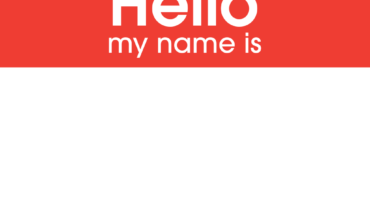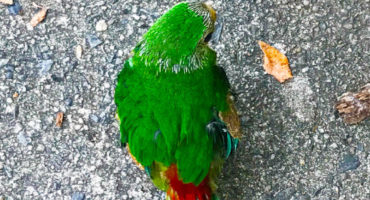PRO-AM World
The relationship between professional and amateur journalists is starting to emerge. Explore how non-professionals connected by social networks and tools influence new models of storytelling and workflow involving eyewitnesses, amateurs and professionals.
Session Chair: Louis Ferrara, Managing Editor Sports, Entertainment & Multimedia, The Associated Press
With:
Michael Tippett, Co-Founder, NowPublic
Kate Marymont, Executive Editor, The News-Press, Ft. Myers, FL
Lauren McCullough, Online Editor, The Associated Press
David Cohn, Editor, NewAssignment and NewTrust
Discussion:
Ferrara: AP is working with NowPublic to figure out how to harness citizen journalism.
Marymont: We have been working very hard to create a newsroom without walls. We try to think of no walls between audience and us. We completely agree with wemedia that the web has changed how the public consumes media. They want to be involved. Why shouldn’t we be the hub of all that. We are always looking for ways to tear down walls and partner with our public. We try to involve the public in investigative and first amendment work. Examples: we fought to get records of FEMA after the hurricane and we had a long battle but we won. We got 2.2 million files and created a database, turned it loose to the public. We wanted to analyze how neighbors were treated. We had to tell them you tell us. The database to date has had more than 60,000 searches. This is powerful information. Also in 07, we had three children die at hands of stepfathers while under care of the Children and Families Department in Florida. It was a two-year project. We turned to the public and built a site within a site – a children’s resource center. When children are dying I think it’s OK to take a position on this. We are now a one-stop shop for people who need info on that subject. One more thing: Recently, we launched a redesign that includes social networking tools for anyone who wants to communicate. We want to be the hub. One important way is to let our disenfranchised community get their stories out.
Tippett: We have about 100,000 people in 4000 cities sending us material. We’ve been working with AP for a while. This is the early stage in evolution of citizen journalism. We want to be able to dispatch people to locations of news.
Cohn: We’ve done a few experiments. One is assignment Zero, which explores the relationship between journalists and citizens. The point of the project is to spur innovation in journalism, and try to figure out the role of journalists when people live lives online. There are three steps in journalism – collecting, filtering information, and presenting information, which can be multimedia now. To the extent technology changes these steps, we are trying to see how technology can be a boon to help journalists do their jobs.
McCullough: Our challenge is to find ways to collect what people have to say and still make the material worthy of having the AP name on it.
Ferrara: Kate (Marymont), in examples talked about, how did you get newsroom buy in on what you did? Was it universal? How did you measure success with those efforts?
Marymont: The obstacles were internal at first – the public was ready to go. Journalists inside were apprehensive. They thought this was a plot to reduce the workforce. But they had to learn that this supplements our journalism, that our partners in the community are strengthening our journalism. We had good early successes with some projects. Now 95 percent of our staff believes, because our journalism is better. We can tap into knowledge in our community we might not have otherwise. We get stories we wouldn’t know otherwise, get documetns we wouldn’t have, it makes what we do better.
Ferrara: What has changed in the AP newsroom?
McCullough: We had the exact same experience; everyone was very skeptical and paranoid that we’d be stripping journalism bylines off stories. But early on we had a success when there was a cyclone and the public hooked us up with one of our citizen members who provided two photos and also provided information because he was an eyewitness. The reporters interviewed him and treated him as a source. Over last year, that’s been the biggest change. There is more acceptance of citizen journalism. Virginia Tech forced people to go to Face Book and see there was information there that was not on TV or that we were not hearing from people on the street. Then a bridge collapsed, we immediately went to Face book. We ran 89 citizen journalism photos. In the NIU shooting, a reporter with a Face Book account pulled names from the TV, looked on Face Book, messaged them and, as a result, one of lead quotes was a girl who had been in the auditorium. She was found through Face book. I think it’s been a big year for people to put aside their fear of youth and embrace it as another place to go and use the information.
Ferrara: When you hear all this, how does skill set change for journalists?
Cohn: I always say job description for journalists is changing for skills and the mindset. With skill set it’s the need to be a web native and knowing what tools are out there and you can harness. Need to know what tools are out there to communicate with people. For the mind sent, it’s doing source organizing and managing and I didn’t learn in Journalism school. Now we need to mange relationships with people through give and take online. This may irk you. But if you look at the way politicians and online organizers do it, they know how to send out queries, asks, because they want money. Journalists need to figure out how to manage relationships on line.
Tippett: I think the point about social networks is key. We are going to a more active role in helping to shape the agenda of what is news, so plugging into mainstream news and sending people to cover and integrate into social networks is effective. We are working with the AP because of recognition that the network of trust is moving toward social networks… the same is true for news.
For us the tool sets we are building is integrating social networks and the face book experience so it can be used by news organizations. We are about extracting a range of meaning across the landscape. How do you get information out of private systems and include that in a system for the news consuming public.
Audience: What I am now hearing is a next step where you let your public boss you around. Will the assignment desk become the place where people will vote for what they want to read, where we no longer do things for them, but they do things for us.
Tippett: The dispatch tool we build to plug into we will make available to people.
Cohn: Newsrooms now are where an editor assigns a story. The editor says what’s the photo? But where is the public feedback here? Conversation happens through the public. Editors are there to make sure the conversation is constructive, etc. I might go to newsroom in 20 years and they might send me to the best bloggers out there.
Marymont: There is no formal feedback loop, but our attempt to partner (with the public) has had that effect. The effect is starting to be there.
Tippett: You maybe are talking about a branding issue. There is now less resistance to having the agenda set from outside the organization.
Marymont: But if a community says this is happening you have to look into it – and we will.
Ferrara: I am still skeptical about this. We get a hard time getting people to vote, and to get people to provide credible information (to news outlets) takes more time.
Marymont: We are not at the point where citizens are doing fully informed journalism. But that doesn’t have to be the goal. They can ask them a question, post a video, etc.
Tippett: There are two camps: Traditional news organizations who want to get a Walter Cronkite (citizen journalist) for free. Then the citizens who are taking snapshots and they don’t understand the mechanism the snapshots go through to become news. These two have to come together, integrate.
Marymont: We have more citizen witnesses than citizen journalists.
Audience: Journalism is not a product but process. Can we have different parts of process distributed among groups of people so the product does not have to look like what you would see in traditional journalism?
Cohn: There are active forms of citizen journalism where I go out and report on something. There are also acts of citizen journalism. At the filter level, it’s easy for citizens to be engaged in news. Fast Company re did its website and included fast talk, where they are creating a database of users. People who respond to that don’t know they are doing journalism. The problem with citizen journalism is that it feels like they are doing a college midterm paper again. So the question for newsroom is now to make it easier to be engaged.
Tippett: We don’t call them citizen journalists on our site. But people are accidentally doing journalism.
Audience: There are not a lot of citizen journalism efforts out there so we have to get members to overcome that. Mainstream is still along way away from getting citizens to engage in a meaningful way.
Ferrara: At the AP we have success in the market place because when it comes from the AP there is no question about it – it’s accurate. It will come down to the market differentiating for itself where it will get its information.
Audience: How is (citizen journalism) affecting your business model?
Tippett: People consume information for different reasons. They read AP because it’s more likely to be factually true. They go to citizen stuff because they want the wild west of what they want to talk about, and be connected to like-minded people. It’s more about a relationship of like-minded people.
Audience: I disagree. People are reacting to the arrogance of mainstream media and they are going to non-traditional sources of information.
Ferrara: I am skeptical that people will do it in a way that has high value to people out there. We get a lot of citizen photos of bending palm trees in storms. We want material that we would not have otherwise had and exclusive and it’s actual content. I am skeptical that people are producing that. We found that in a bridge collapse, at Virginia Tech, content comes from these events but does it distinguish itself on the landscape? In the NIU shooting we got 1000 pictures but 900 were relatively the same. What learned out of Virginia Tech and NIU is that, guess what, you don’t stop to take pix. So how do you get that content? I want everyone to capture a Zagruder film.
Audience: How do you ensure accuracy in public content?
McCullough: “The vetting process is the same as if a crazy person calls us.” She speaks to the NowPublic manager, gathers information, sends it to the AP photo editors, the photo editors evaluate the photo and vet the photo. “Because it’s AP it’s a longer process. We get the OK on something then it goes out on the wire.”
Audience: Citizen journalism is in its infancy and it’s too early to cast judgment on its viability but there is enormous promise.
Cohn: We are talking about citizen journalism as it bubbles up. Minnesota Public radio now has a database of listeners and if they want to know something they ask them. For example, they wanted to know how dangerous is route 23. They looked at database of who lives there and asked them for responses. You can get a better sense of who readers are and that will inform reporting in the future. We can ask and accept feedback. It works both ways.
Tippett: We are in the second inning here and one of issues that causes friction is that where there is a vetting process and it can be onerous. But that friction will be reduced over time. And as we establish a cadre of reporters who have a history, we will have mechanisms for determining credibility. If you have a person who has had 15 photos published, the friction level goes down.
McCullough: Citizen journalism isn’t new to the public. In the case of Colombia shuttle a doctor took the first pix. Now we know we have a great doctor who takes photos and we can go back to him. He’s proven his worth.
Audience: What actions of citizen journalism will be useful and what proportion will be those you produce? What about covering corruption, which will have different incentives?
Tippett: I think it will be an evolutionary process. In terms of motivation of our users don’t want to get paid. A lot of citizen journalism is therapeutic. If you look at the London bombings, there was no financial incentive (for citizen journalists) but they couldn’t believe that happened. It’s a natural impulse to want to tell people things. But over time we’ll see citizen journalism about cultural events people engaged are with. People are doing wacky and unusual things, that kind of underground will be talked about by people. Will we ever have a citizen Journalist deepthorat? And will we believe him or her? I don’t know. But will see lighter stuff becoming part of mix.
Audience: A lot of reporting at Reuters is financial. And a story that makes the wire moves markets. There are many ethical issues that can arise.
Cohn: CJ does lend itself to eyewitness accounts more than others. And no matter what the topic query there are experts out there. The threshold to write a story about the environment is higher.
Marymont: We have had success in recruiting CJ volunteers with expertise in certain areas. We solicited people who believed government should be held accountable and they are smart retirees we call on. A retired school superintendent helps us go through the school budget. We check them out; make sure they don’t have agendas. They believe in what we do.
Audience: Crowd sourcing intrigues me. You did an experiment with sewer bills. Please talk about that.
Marymont: In one of the suburbs there was a utility expansion and the rates shot up. We sent out solicitations to the public on do you know what’s going on – 6000 people submitted pieces of information. They told us about back room meetings, they submitted audits, all because of crowd sourcing. We broke stories because of the knowledge and wisdom of the community. Some officials were fired… The story developed over many weeks with pieces of information; it unfolded online.
Cohn: It’s easy to do. If you have a blog you can write a survey and publish it.
Audience: What are the demographics of the people who contribute?
Tippett: We break it down to two groups – Wikipedia types who are nerds about a topic and passionate about their area and subject – and eyewitnesses who are at the right place or the wrong place. Wikipedia folks are older. And the ones who send in photos are younger than I am.
Audience: Do you think people will want to participate as C J?
Tippett: I think there is information overload. But this will define the value of news. The vast majority of people are not citizen journalists – it’s a small, passionate group, who are atypical for the most part.
Cohn: people are living more and more of life on line. I go to the web to solve problems… As long as people are living life online then CJ hasn’t reached its tipping point. CJ is still a little secret.
Ferrara: Also what is value of content that’s there? A lot of CJ that’s out there has been pure luck. The video of 911 or the Tsunami is that people happened to be there and we acquired it from them. Will they go out and shoot news? I don’t know.
Audience: Is it appropriate to provide incentives to citizen journalists? Giving them payback.
Ferrara; It’s only a mater of time before people ask for a lot of money. Eventually, people will pick up on why they are not getting paid.



